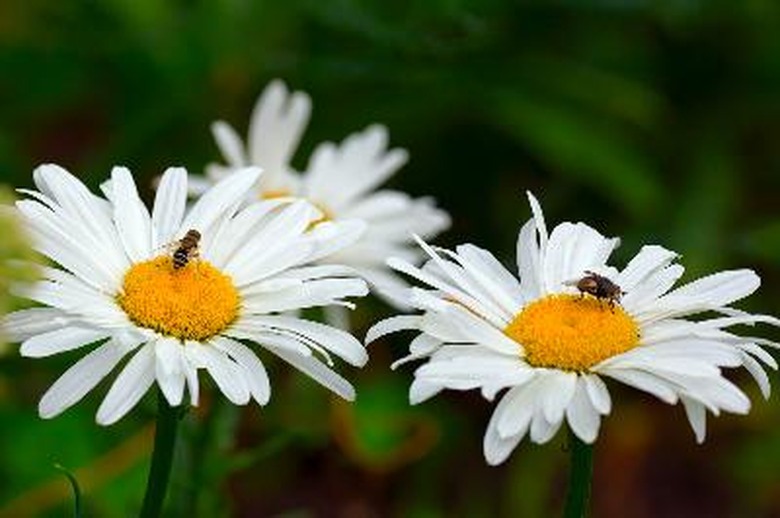Why Are There Flies All Over My Flowers?
We may receive a commission on purchases made from links.
If flies are all over your flowers, either indoors or out, several common types may be the culprit. You might be used to grabbing the fly swatter to get rid of houseflies, but other measures are necessary to protect your flowers from sometimes harmful flies. Not all flies are harmful, so you may want to leave them be. Depending on the types of flies, there are several reasons why they may be all over your flowers.
Tip
Different types of flies can bug your flowers. They're attracted to flowers for different reasons depending on the type of fly, but common reasons include soil that stays wet, lots of organic debris on top of the soil, and decaying plant material.
Fungus Gnats on Flowers
Fungus Gnats on Flowers
Fungus gnats resemble mosquitoes more than common flies. The larvae feed on the organic matter in the soil, possibly harming the roots in the process. Fungus gnats are more likely to be present in constantly wet soil. They often infest houseplants that are brought outdoors during the warmer months.
To get rid of fungus gnats, replace the potting soil in potted plants. For all plants, allow the soil to dry out between waterings, clean up the organic debris on top of the soil, and snip off decaying foliage. Trap fungus gnats with yellow sticky fly traps, available in nurseries, or use a pesticide that's safe for plants, but adhere to the directions and warnings on the label.
Shore Flies on Flowers
Shore Flies on Flowers
Shore flies look similar to fungus gnats but are distinguished by the presence of five light-colored spots on their dark wings. Their larvae infest the soil and can damage plant roots. They also thrive in wet, decaying organic matter.
Clean up the plant debris around your flowers and snip off the decaying leaves on your plants. Let the soil dry out between watering sessions. If you use a pesticide, carefully follow the label instructions. You'll have to repeat applications because larvae are not usually affected by pesticides.
Hover Flies on Flowers
Hover Flies on Flowers
Hover flies, also known as flower flies, are beneficial insects that can benefit your flowers. They resemble bees more than common flies with striped abdomens that can be black and white or black and yellow. They measure roughly 1/8 to 5/8 inch long. You'll often see them hovering over your flowers similar to a hummingbird.
Hover fly larvae eat aphids, scale, caterpillars, and thrips, all of which damage plants. They are all over your garden because there are insects for them to eat and flowers to pollinate.
Whiteflies on Flowers
Whiteflies on Flowers
Whiteflies damage vegetable and ornamental plants, sucking sap from the leaves, excreting sticky honeydew, and causing the leaves to yellow and die. They resemble tiny moths with yellowish bodies and four wings and are about 1/16 to 1/10 inch long. Whitefly infestations quickly spread, which can worsen the damage to your flowers, and a severe infestation can be difficult to control. They're often the worst in warm weather.
To get rid of them, clip off the foliage most infested and dispose of it. Hosing off the plants to remove the whiteflies can also help. Use yellow sticky fly traps or vacuum the insects. Insecticides often don't work on whiteflies, as they may build up a resistance to the chemicals, and the chemicals can kill beneficial insects that help keep whiteflies and other damaging pests under control.
